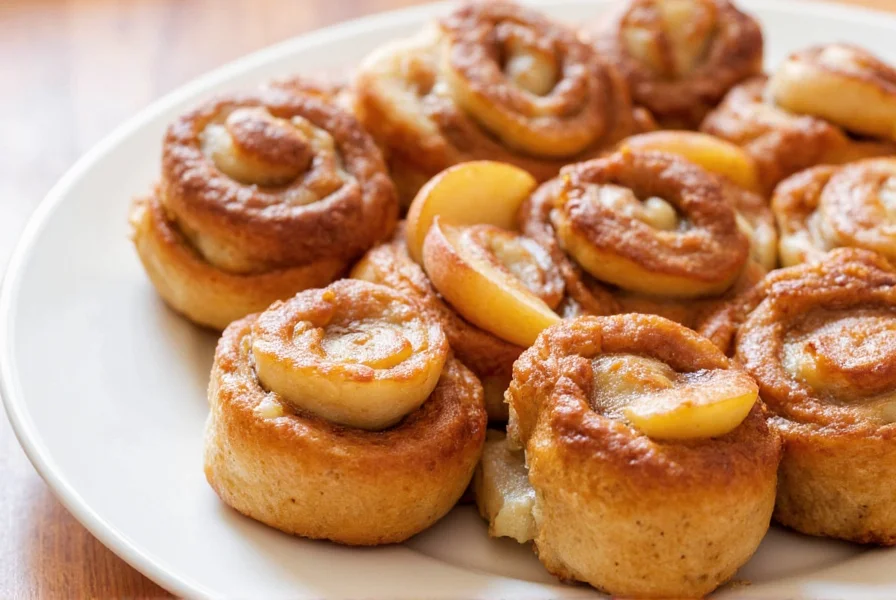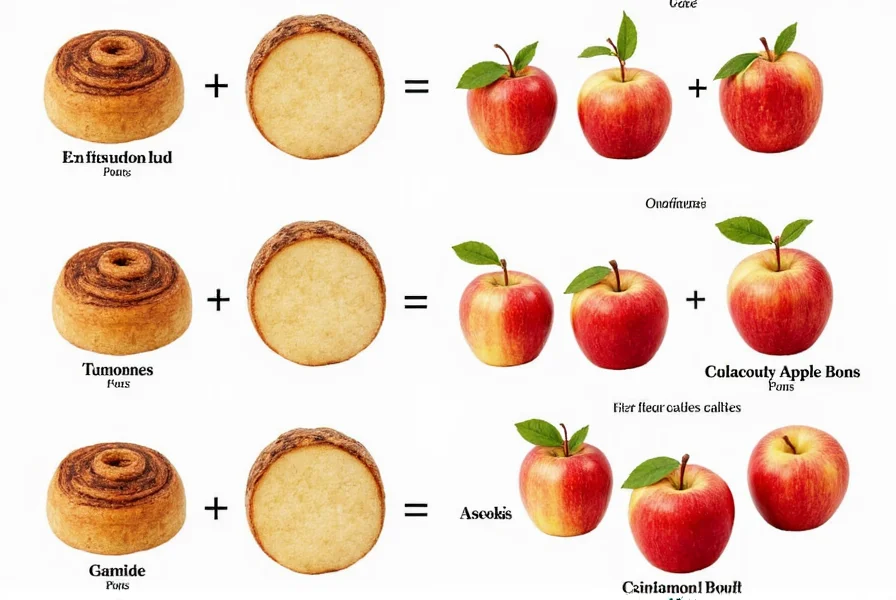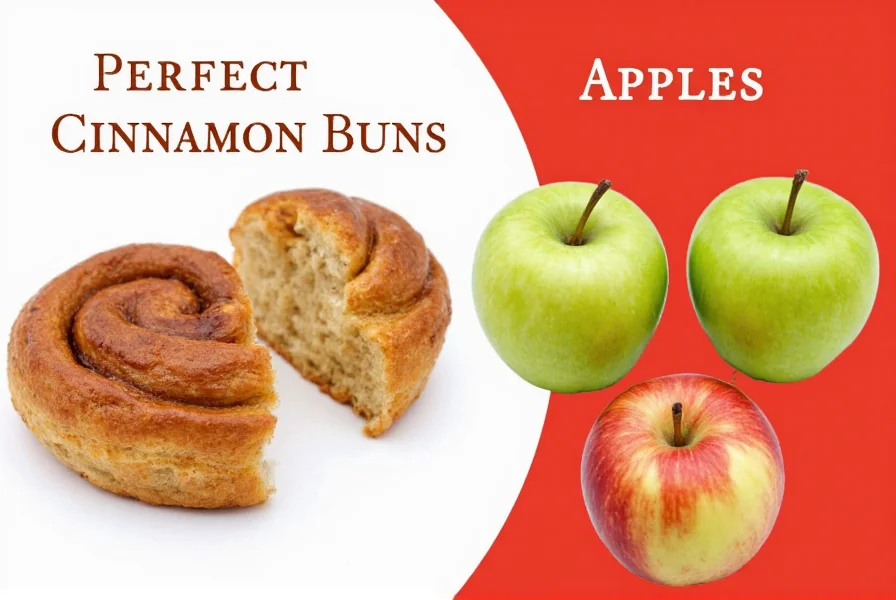When cinnamon buns meet apples, you're experiencing one of baking's most delightful synergies. This combination works because apples provide a natural sweetness and slight acidity that cuts through the richness of traditional cinnamon roll dough, while their texture creates interesting contrasts with the soft bun interior. The magic happens when the apple's pectin interacts with the cinnamon's essential oils during baking, creating new flavor compounds that neither ingredient produces alone.
The Science Behind the Perfect Pairing
Culinary chemistry explains why cinnamon bun apple filling recipe variations consistently satisfy. Apples contain malic acid, which enhances our perception of sweetness without additional sugar. When combined with cinnamaldehyde (cinnamon's primary compound), they create a flavor profile that activates multiple taste receptors simultaneously. This multisensory experience makes apple cinnamon roll baking temperature crucial—too high and you lose delicate volatile compounds; too low and the flavors won't properly meld.
Selecting Apples for Cinnamon Buns
Not all apples perform equally in best apple cinnamon bun recipe applications. Consider these varieties:
| Apple Variety | Texture When Baked | Best For |
|---|---|---|
| Honeycrisp | Holds shape well | Sliced toppings |
| Granny Smith | Firm with tartness | Filling compote |
| Fuji | Softens beautifully | Integrated dough |
| Braeburn | Balanced firmness | All-purpose use |
Professional bakers recommend using a combination of at least two varieties to create easy apple cinnamon roll preparation with layered flavors. For example, mixing tart Granny Smith with sweet Fuji creates natural flavor complexity without excessive added sugar.

Traditional Swedish-Inspired Apple Cinnamon Buns
While American cinnamon rolls tend toward sweetness, Scandinavian traditional Swedish apple cinnamon buns strike a more balanced profile. The authentic approach uses cardamom in the dough and limits sugar in the filling, allowing the apple's natural flavors to shine. For the most authentic experience:
- Use cold-pressed butter for flakier layers
- Incorporate apple cider instead of milk in the dough
- Add a touch of Calvados (apple brandy) to the filling
- Finish with pearl sugar rather than icing
Step-by-Step Baking Process
Creating exceptional homemade apple cinnamon buns step by step requires attention to detail at each stage:
- Dough preparation: Mix until just combined—overworking develops too much gluten
- First rise: 60-90 minutes at 75°F (24°C) for optimal yeast activity
- Apple preparation: Sauté apples with 1 tbsp butter, 1 tsp cinnamon, and lemon juice until just tender
- Rolling technique: Spread filling evenly but leave ½ inch border to prevent leakage
- Second rise: 30 minutes uncovered—critical for proper oven spring
- Baking: 375°F (190°C) for 22-25 minutes until internal temperature reaches 190°F (88°C)
Avoiding Common Mistakes
Even experienced bakers encounter issues with cinnamon bun apple topping ideas. Watch for these pitfalls:
- Apple leakage: Prevent by ensuring apples are properly drained and not overfilled
- Dense texture: Caused by over-kneading or expired yeast
- Burnt bottoms: Use light-colored pans and monitor baking time carefully
- Flavor imbalance: Taste your apple mixture before filling—adjust spices as needed
Serving and Storage Recommendations
For optimal enjoyment of your cinnamon bun apple filling recipe, serve within two hours of baking when the aroma compounds are most volatile. If you must store them:
- Cool completely before storing to prevent sogginess
- Store in airtight container at room temperature for up to 48 hours
- Reheat in 300°F (150°C) oven for 8-10 minutes rather than microwave
- Freeze unbaked rolls for up to 3 months—bake from frozen with extra 5-7 minutes

Variations for Dietary Preferences
Modern how to make apple cinnamon buns from scratch techniques accommodate various dietary needs without sacrificing flavor:
- Gluten-free: Use 70% bread flour substitute with xanthan gum
- Vegan: Replace butter with coconut oil and use plant-based milk
- Reduced sugar: Incorporate date paste and reduce added sugar by 30%
- Protein boost: Add 2 tbsp almond flour to dough for extra nutrition
Frequently Asked Questions
Can I use canned apples for cinnamon buns?
While fresh apples yield superior texture and flavor, you can use canned apples in a pinch. Drain thoroughly and reduce added liquid in your recipe by 2 tablespoons. Avoid pie fillings with thickeners as they create an unpleasant texture when baked into cinnamon rolls.
Why do my apple cinnamon buns collapse after baking?
Collapse typically occurs from underbaking or opening the oven too early. Ensure your buns reach 190°F (88°C) internally and avoid opening the oven during the first 15 minutes of baking. The structure needs time to set before temperature fluctuations can occur.
How can I prevent apples from sinking to the bottom?
Toss apple pieces in 1 teaspoon of flour before adding to the filling. This creates a barrier that prevents excess moisture from weighing down the dough. Also, avoid overfilling—use no more than 1½ cups of prepared apples for a standard 9-roll recipe.
What's the ideal cinnamon to apple ratio?
For balanced flavor, use 2 teaspoons of cinnamon per 2 cups of prepared apples. Taste your apple mixture before filling—different apple varieties require slight adjustments. Sweeter apples may need an extra ¼ teaspoon of cinnamon to maintain flavor balance.
Can I prepare apple cinnamon buns the night before?
Yes, assemble the rolls and place them in the pan, then cover tightly and refrigerate for up to 18 hours. The cold fermentation develops more complex flavors. When ready to bake, remove from refrigerator 30 minutes before baking to take the chill off, then bake as directed—may need 2-3 extra minutes.











 浙公网安备
33010002000092号
浙公网安备
33010002000092号 浙B2-20120091-4
浙B2-20120091-4